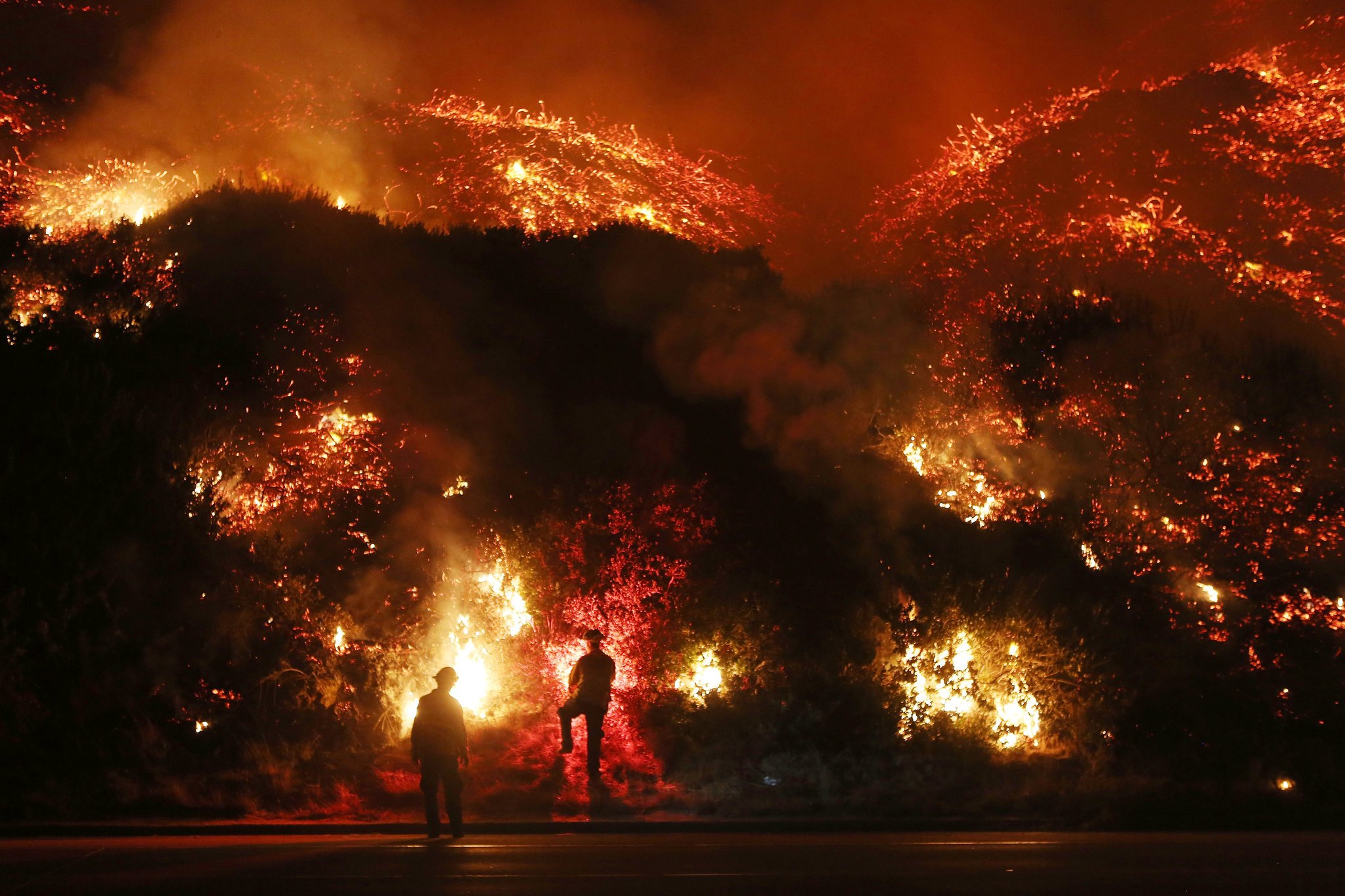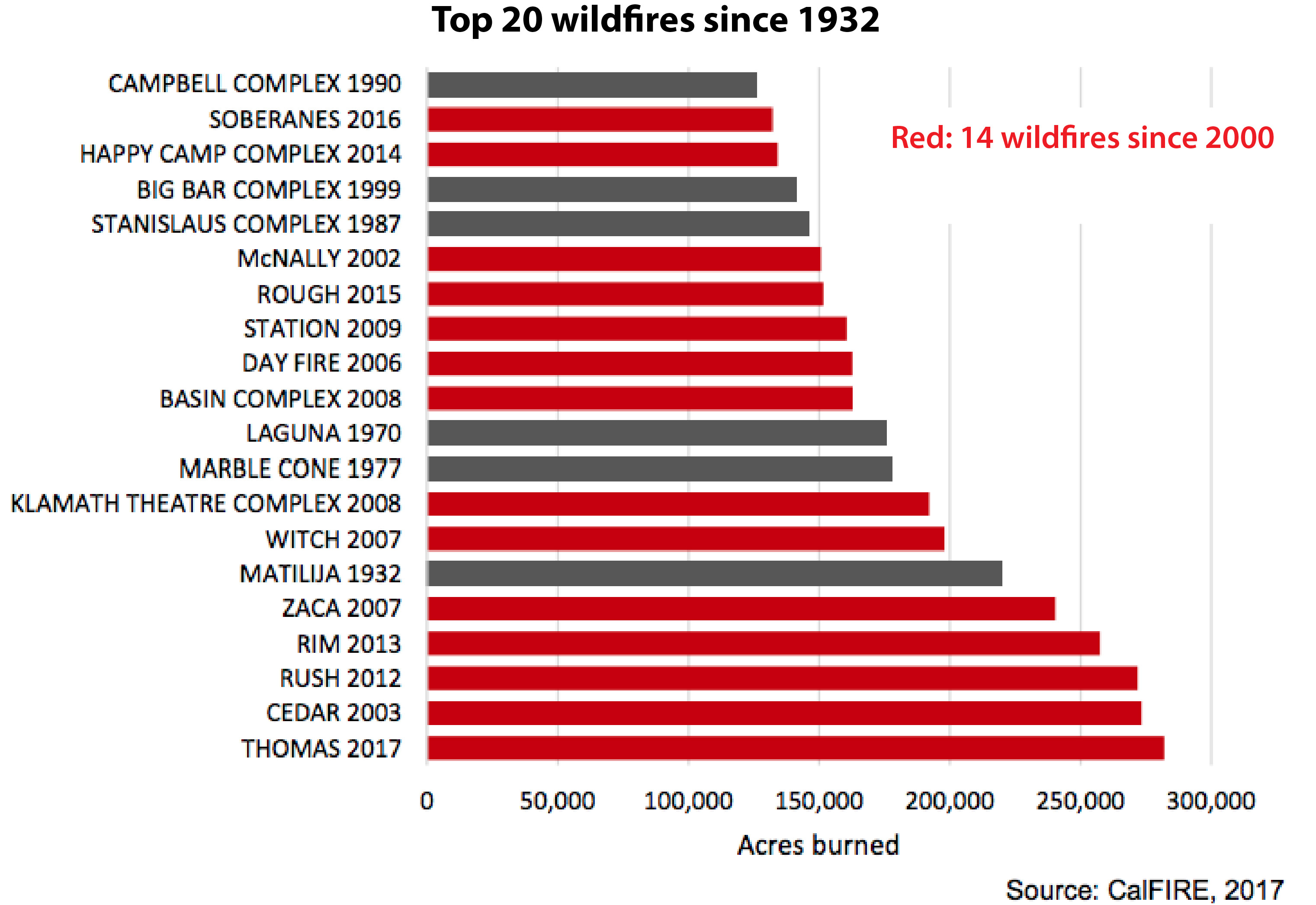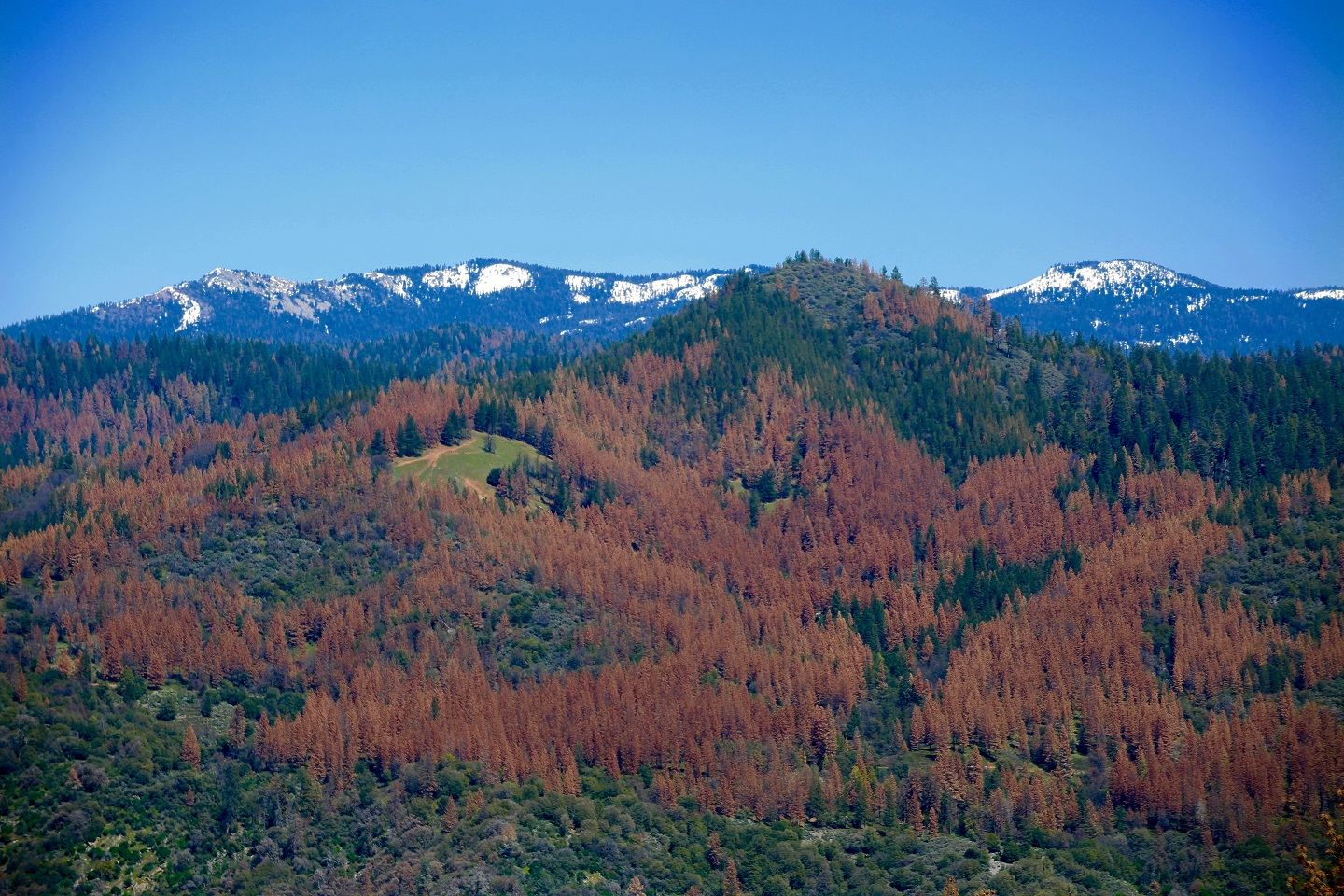
Click to call for better wildfire insurance through Lighthouse
By David Jacobson, Temblor

Governor Brown signs executive order
In an effort to reduce the dangers of wildfires, California Governor Jerry Brown signed an executive order yesterday that calls for accelerating forest management and restoration. This order comes mere months after the state saw some of its largest and deadliest blazes. Issues that will be tackled with this order include: combating tree mortality, increasing the ability of forests to capture carbon, and improving forest management. In order to support these efforts, a May budget revision will be released today, in which an additional $96 million will be allocated to aid this executive order. This is on top of $160 million Gov. Brown already proposed for fire protection and forest work this fiscal year.
Wildfires are getting larger in California
Governor Brown’s actions come on the heels of a California Environmental Protection Agency report released Wednesday in which startling climate change impacts on California were outlined. One of these is how the area burned by wildfires across the state is increasing in tandem with rising temperatures.

Across the Western U.S., studies have shown that increasing spring and summer temperatures, along with earlier spring snowmelt are associated with increased wildfire activity. This is because soils are drier, tree fatality increases, and there is decreased streamflow. All these factors increase the risk of extreme wildfires that spread rapidly. To make matters worse in California were the record-setting droughts from 2012-2016, which significantly elevated the risk. This has taken its toll as in just the last few years, California has seen its largest forest fire (2013 Rim Fire) and wildfire (2017 Thomas Fire), as well as the deadliest (2017 Northern California fires) and most destructive (2017 Tubbs Fire). Further highlighting the changing climate we have is that 14 of the 20 largest wildfires in the state’s history have occurred since 2000.

Because of the increased number and severity of fires across the state, as well as the losses sustained, fire suppression has become a higher priority for government agencies. Because temperatures are rising earlier in the year, the fire season has grown longer, meaning the amount of money allocated to fighting fires is often exceeded, eating into the budget meant to be used to foster greater forest health. This is what the executive order and additional funding is attempting to tackle.
What is the plan to combat wildfires?
In addition to the executive order signed by Gov. Brown yesterday, the California Forest Carbon Plan was also released. This document outlines multiples strategies that can be taken to promote healthy and resilient wildland. Because California has 33 million acres of forest, combating the wildfire issue is not something that can be done overnight. Therefore, the plan brings up both short and long term goals.
Some of the key strategies at the heart of the plan include thinning of dense forests, the use of prescribed/managed fires, and fuels reduction. Thinning overly dense forests and doing prescribed burns can make areas at greatest risk healthier and more resilient to wildfire. Additionally, the state hopes to double the amount of acres treated each year (From 250,000 acres to 500,000 acres) within five years. By taking greater action, the state hopes to reduce the areas at highest risk of wildfire.
Yet another issue at play is the overall health of forests in California. In addition to the recent wildfires, which have wreacked havoc of forests, over the last few decades, tree mortality across the state has dramatically increased. In a recent aerial survey, it was found that approximately 129 million trees, over an area of 8.8 million acres, died in the Sierra Nevada region from 2010-2017. Dead trees such as the ones in the Sierra Nevada region pose a significant risk as they behave like matchsticks in fires. In total, the Forest Climate Action Team estimates that 15 million acres of forest in California need some sort of restoration. 10 million of these acres are on federal land, while the remaining five are on private land.


We too must play a role
Because not all of the forest at greatest risk of wildfire is on federal land, the state is also planning to boost education to landowners on the most effective ways to reduce vegetation and other forest-fire fuel sources on private land. This highlights how protecting ourselves from the risk of wildfires is not just the government’s job, but ours as well. It must be a collaborative effort, for only by doing things that way, can change be made on a meaningful scale.
The aim of all these orders and plans is to make California forests as healthy as possible. The best science has shown that over the coming decades, forests will experience unprecedented stress due to climate change. This will come in the form of wildfire, pests and disease outbreak, as well as changes in temperature and water supply. Therefore, only by taking significant action now will we be able to help prevent greater damage in the future. This is why $256 million has been allocated towards fire protection and risk reduction in this year’s fiscal budget. Now, we must stay the course, for only through strong partnerships and commitment will we be able to ensure the health and management of our forests and protect a natural resource from the wrath of climate change and wildfire.
References
Office of Environmental Health Hazard Assessment, California Environmental Protection Agency (2018). Indicators of Climate Change in California. – Link
Forest Climate Action Team. 2018. California Forest Carbon Plan: Managing Our Forest Landscapes in a Changing Climate. Sacramento, CA. 178p. – Link
California Executive Order B-52-18 – Link
San Francisco Chronicle
SFGate
Scpr.org
- Earthquake science illuminates landslide behavior - June 13, 2025
- Destruction and Transformation: Lessons learned from the 2015 Gorkha, Nepal, earthquake - April 25, 2025
- Knock, knock, knocking on your door – the Julian earthquake in southern California issues reminder to be prepared - April 24, 2025

